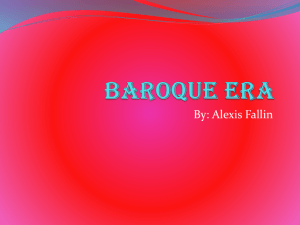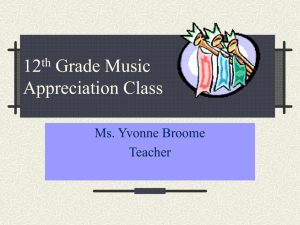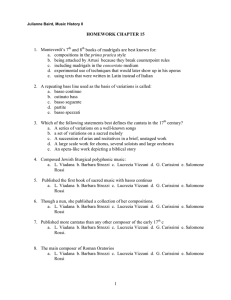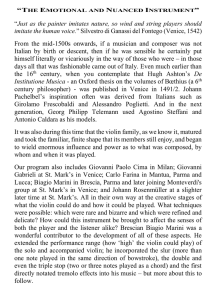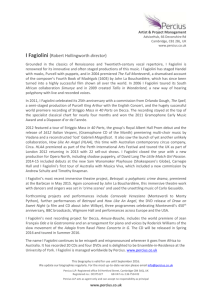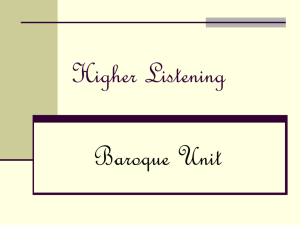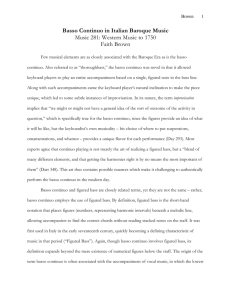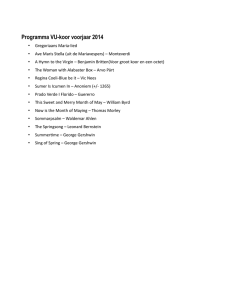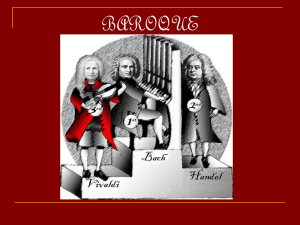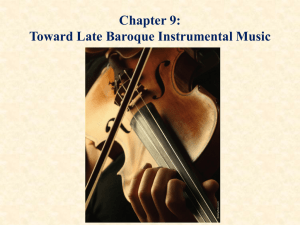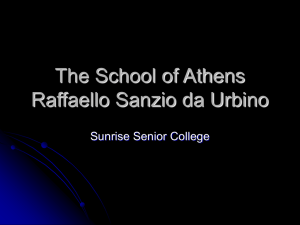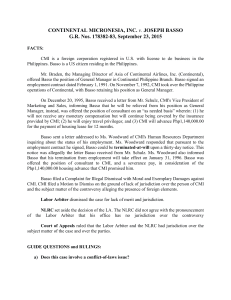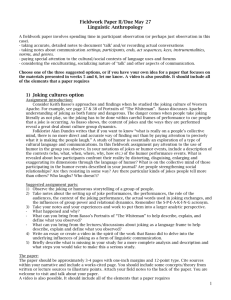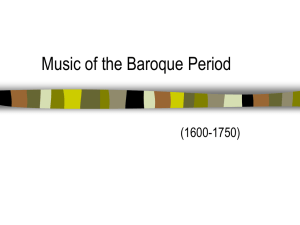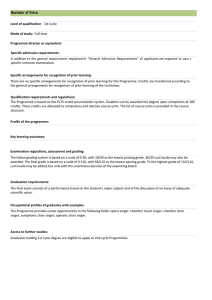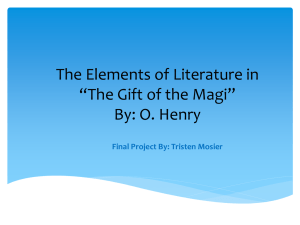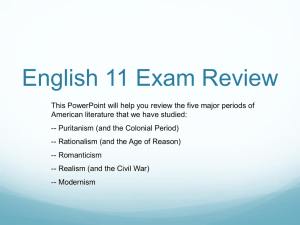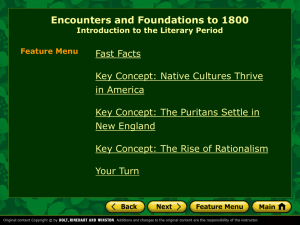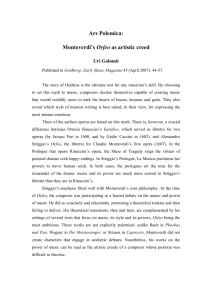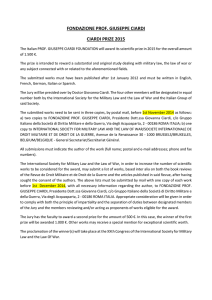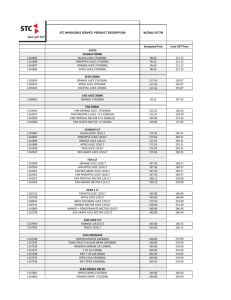The period of Rationalism
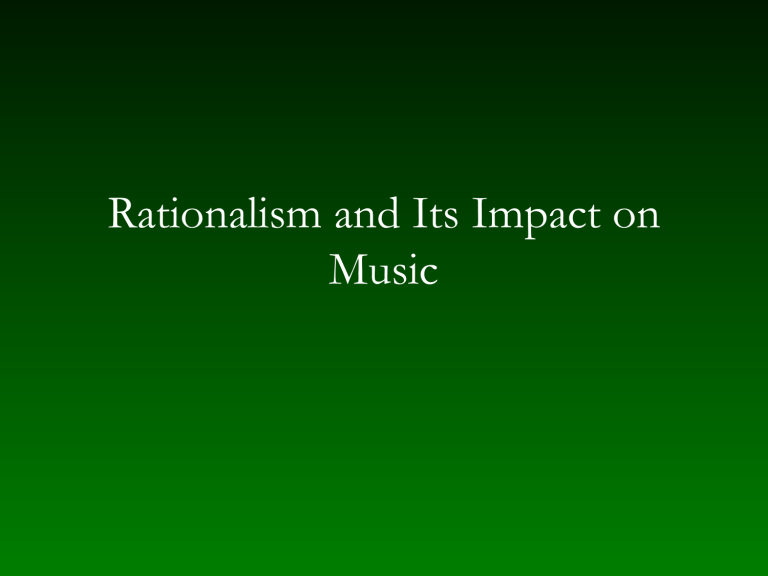
Rationalism and Its Impact on
Music
“Baroque”
• Used to identify period in art and music history before
1600 to about 1750
• Originally a pejorative word — overornamented, distorted, grotesque — used by critics from later periods
– does not apply to all arts of that period — e.g., French academic dramatists Pierre Corneille (1606–1684) and Jean
Racine (1639–1699), painter Jan Vermeer (1632–1675)
– certainly does not reflect artists’ ideas in the period
– music includes a variety of styles over long period
Rationalist principles
• Reason supersedes received authority from church or ancients
– Francis Bacon (1561–1626) — clearing away errors in thinking
– René Descartes (1596–1650)
• Discourse on Method (1637) — principles of rationalism
• The Passions of the Soul (1649) — important for aesthetics
• Aesthetic presuppositions
– Humanism — to portray the idea, “imitate” the “sense” of words
• Gioseffe Zarlino, Istitutione armoniche (1558)
• Thomas Morley, A Plaine and Easie Introduction to Practicall
Musicke (1597)
– Rationalism — to move the audience, imitate rhetorical speech
• pathos rather than ethos; affetto rather than virtù
• Vincenzo Galilei, Dialogo della musica antica e della moderna
(1581)
Historical factors in the seventeenth century
• Courts — important for arts
– major powers
• France, absolutism under Bourbons in Paris
• Hapsburg empire — centered in Austria
– principalities in Germany (electors for Holy Roman
Empire) and Italy
– constitutional monarchy in England
• Civil War, 1642
• Commonwealth, 1649
• Stuart Restoration, 1660
• Church — important for the arts
– Roman Catholicism — Jesuitism
– Lutheranism (Orthodox Lutheran and Pietist branches)
– Church of England
Important commercial cities in the seventeenth century
• Venice — port (Adriatic)
• Hamburg — port (North Sea)
• Leipzig — center for publishing
• London — capital and trade center
Monody and basso continuo
Camerata — amateurs in Florence interested in Classical antiquity
• Giovanni de’ Bardi (1543–1612) — host, nobleman, writer
(Discourse on ancient and modern singing, ca. 1578)
• Girolamo Mei (1519–1594) — scholar in Greek literature; lived in Rome, letters to Florence
• Vincenzo Galilei (late 1520s to 1591) — lutenist and singer, theorist (Dialogo della musica antica e della moderna, 1581)
– objection to polyphonic song on principle
– monodic texture based on Mei’s information about Greek drama
– rhetoric as model for moving affections
Monodic texture — homophony
• Vocal part
– declamation influenced by existing formulas for singing strophic poems, Camerata’s theories
– ornamentation (derived from Renaissance improvisation in polyphony)
• Bass treatment
– Renaissance basso seguente — essentially lowest line
– basso continuo from ca. 1590s
• real, independent part as polar opposite of melody, freeing vocal bass
• addition of figures — practical, but optional
• Giulio Caccini (ca. 1545–1618) — singer and composer
– Le nuove musiche (1602) — explained and illustrated new style
Caccini, Le nuove musiche (1601)
Concertato scoring
• New ideal — exploit heterogeneous performers
– from Latin concertare — to contend or fight
– unlike humanist ideal of homogeneous, a cappella sound
• Usages of term
– sixteenth century — colla parte (e.g., Cristoforo Malvezzi,
1589, reports that a madrigal was “concertato” with instruments)
– 1587 — Gabrieli collection — first use in title
• polychoral, voices and instruments
– 1602 — Lodovico Grossi da Viadana, Cento concerti ecclesiastici
• one or more singers with organ basso continuo
– 1610 — Monteverdi, 1615 Giovanni Gabrieli
• voices and instruments, independent, idiomatic roles
Seconda pratica harmony
• Sixteenth-century harmonic style — panconsonance
– theorist — Zarlino, Istitutione harmoniche (1558)
• Mannerism — chromaticism and cross-relations
– e.g., Carlo Gesualdo (ca. 1561–1613)
• Seconda pratica
– new dissonances permitted — including accented passing tones and neighboring tones, appoggiaturas, escape tones
– G. M. Artusi (ca. 1540–1613) — attacked dissonances in new style with score (no text) examples from madrigals by
Monteverdi, 1600
– Claudio Monteverdi (1567–1643) — reply in Foreword prefacing Madrigals, Book 5 (1605), amplified by
Dichiarazione in Scherzi musicale (1607) by his brother Giulio
Cesare Monteverdi (1573 to ca. 1630), justifying unusual harmony as rhetorical expression of text’s affect
Questions for discussion
• How does the change from Humanist to Rationalist aesthetics and musical style compare to the change at the beginning of Humanism?
• How are rational and passionate aspects of musical experience kept in balance or synthesized in seventeenth-century musical thought and style?
• Compare basso continuo texture to earlier textures in
Western music.

